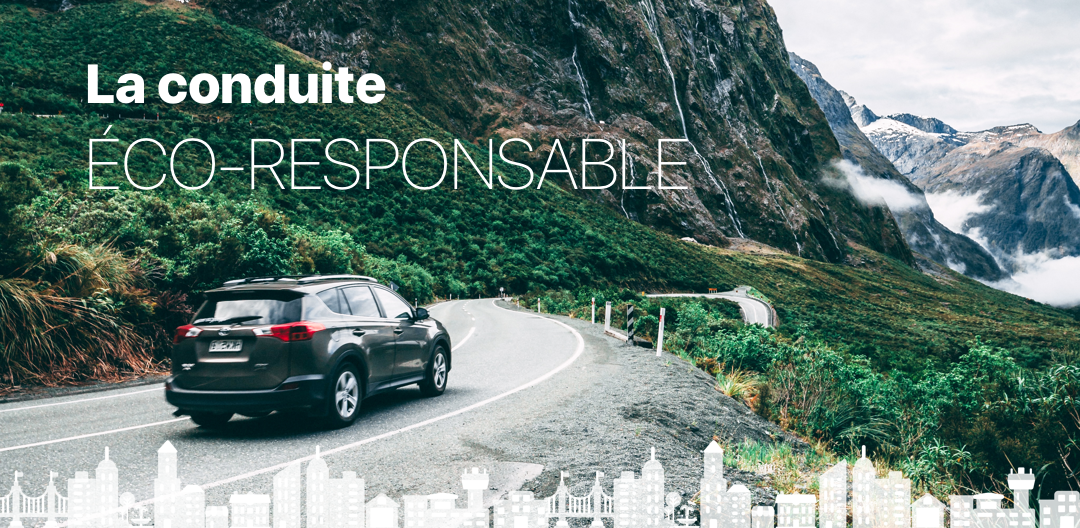Responsible driving, or eco-driving, is a real innovation. But it’s not technically very complicated. It’s a set of methods that allows you to save fuel, reduce its ecological impact and guarantee greater safety, without having to change vehicles. What are the benefits? How do we get started? We tell you everything here.
The benefits of responsible driving
Responsible driving has real benefits. Various studies, such as theAdeme reportexist and demonstrate all the advantages of driving flexibly and responsibly. By adopting it, you win on 3 levels:
- Savings: Adopting responsible driving can result infuel savings of up to 25%;
- Ecology: regulating one’s speedreduces CO2 emissions by 15% over a 500 km journey;
- Safety: controlling your speed reduces the number of accidents on the roads by 10 to 15%.
Nothing is invented and the figures speak for themselves: a driver of a diesel vehicle who drives about 15,000 km per year can save about €300 over the year at a price of €1.25 per litre of diesel and a driver of a petrol vehicle about €400 at a price of €1.35 per litre of petrol.
So how do you become a champion of eco-driving? Well it’s very simple and it’s just common sense!
Tips and tricks to practice eco-driving
The rules of eco-driving are very simple to apply. Here are the main tips!
Avoid abrupt starts
Eco-driving starts (and it is the case to say it) as soon as you put the ignition on! When the engine is still cold, that’s when it consumes the most fuel. Indeed, consumption is 50% higher during the first kilometer than during the rest of the journey. It is therefore advisable to drive as smoothly as possible when starting a journey, and above all to set off immediately. There is no point in “warming up” a stationary engine when it is not in use except to overuse fuel.
Shift gears as soon as possible
To drive smoothly thanks to its gearbox (hello manual drivers), shift gears as early as possible, allowing your engine to change speed. The right rpm is between 1500 and 2000 rpm (this of course depends on the age and type of engine. The latest models even make it possible to go below 1,500 rpm, especially for diesel. The faster the engine runs, the more fuel it consumes; conversely, the slower it runs, the less it consumes. Shifting a gear at the right time saves fuel.

Maintain a steady speed
The more frequent the accelerations and decelerations, the more fuel the engine consumes. All you have to do islimit them. To help you do this, you can use the options available in your vehicle: cruise control is a good way to maintain a steady speed over long journeys.
Reducing your speed by as little as 10 km/his also the most effective way to save fuel. 10 km/h less means a reduction in fuel consumption of 3 to 5 litres over 500 km and 12 kg of CO2 in the air.
Anticipate as much as possible
By anticipating potential obstacles, the behaviour of other road users, pedestrians, this allows you to :
- to limit braking and thus avoid “crushing” unnecessarily;
- maintain a stable speed and therefore reduce your fuel consumption;
- to approach a climb by adapting your rpm as well as possible and to use the engine brake when approaching a descent.
Maintain one’s vehicle
Vehicle maintenance plays a very important role in fuel consumption. It is essential to check three points:
- the pressure of your tires: under-inflated tires are synonymous with over-consumption and therefore pollution (2.4% more consumption per 0.5 bar deficit);
- the balance of the vehicle: it allows to avoid a too fast wear of the tires, to have a stable steering, to limit the useless mechanical solicitations;
- oil levels and vehicle equipment: when they are not maintained, they lead to over-consumption and improper use of the vehicle.
I drive an electric car, does that work for me too?
Drivers of electric cars certainly wonder about the benefits of driving in a zen way.
Although electric cars do not emit CO2, their weakness remains their range and the components of the batteries which are particularly polluting. Not to mention the recharging time, which can be very long and can be an unnecessary waste of time. You might as well try to optimize your consumption in this case.
Responsible driving extends the driving time of an electric vehicle and thelife of its battery. In addition, most electric vehicles allow the battery to be recharged a little during deceleration. The longer this one is long (thanks to anticipation) the more chances you have to recover energy. By driving we go faster, by “eco-” driving we go further!
Become a champion of responsible driving with eiver
eiver encourages responsible driving by rewarding you for all your efforts. Using eiver encourages you to drive more smoothly and calmly. At the end of each trip, find out your driving score, the better you drive, the more XP you earn. These XP will be converted into eCoins redeemable as vouchers available in the Rewards Area of the application.
The Rewards Area brings together exclusive discounts available in the eco-friendly and automotive worlds. Because adopting an eco-responsible behaviour does not only concern the road, we also invite our drivers to move towards a more committed mode of consumption!
So, you want to practice responsible driving? Slow down a bit, be zen and drive with eiver! Let’s go for savings!



